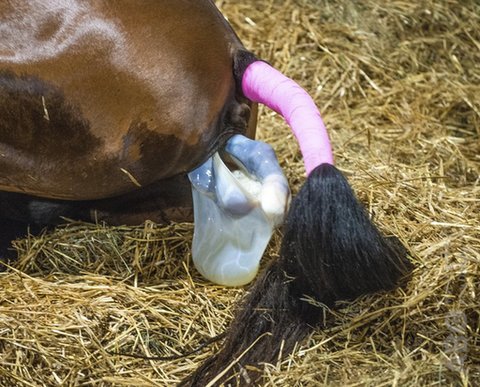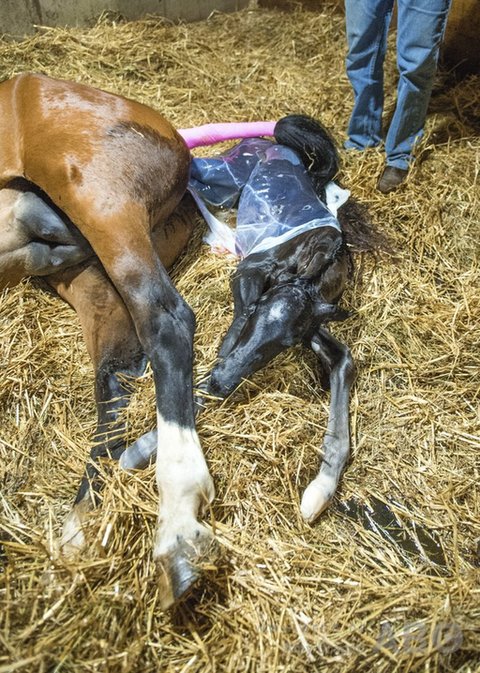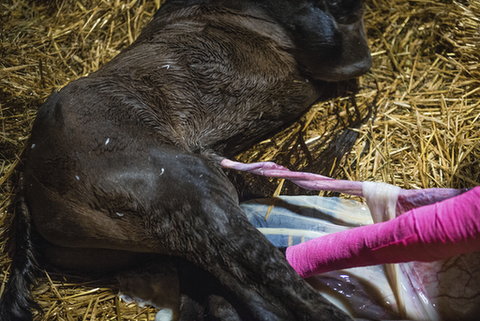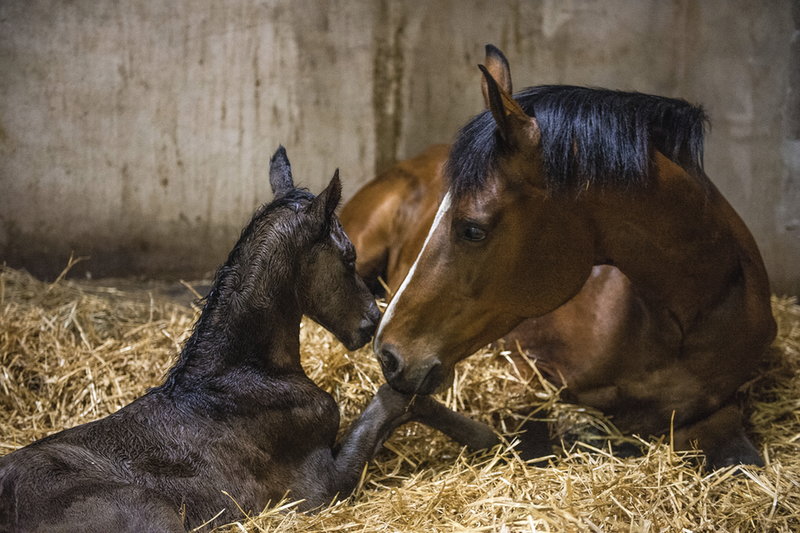

The Foaling Process

When you see that the foaling process has started, then leave your mare to it as much as possible. Foaling usually happens quite quickly. A mare usually starts sweating first, then her waters break and she will lie down. But this is not set in stone. The main thing is that there is something happening all the time, that there is progress. If your mare has been lying down for ten minutes without anything happening, it will be wise to go and have a look. If it is your first foaling experience, we recommend that you get an experienced person to attend the foaling process, such as a breeder colleague or your veterinarian.

Phase 1
Once your mare's waters have broken and she lies down, you will often see the first pair of hooves within a few minutes. If it takes longer than 10 to 15 minutes, then use your hand to have a feel inside your mare to see if you can locate the hooves. You will obviously need to wash your hands first. You may be able to gently direct its feet. If you are not sure, then phone your veterinarian. As you have already had a feel, you will be in a better position to explain the situation.

Phase 2
First to exit are the feet, then the head. Next, the mare will have to give a hard push to expel the ribcage and the rest will gently slide out after that. If the hind legs stay inside the mare for a bit, this is not an issue at all. Just make sure the foal's nose is not covered by a membrane. If it is, remove the membrane immediately.

Phase 3
If all goes well, leave the foal to lie down quietly for a bit, without disturbing the mare and her foal. The umbilical cord should initially remain attached. In this short space or time, the foal will receive an extra three quarters of a litre of blood from its mum, which is important so your foal will receive additional nutrients and protective antibodies, which are essential for a healthy start.
When the mare stands up, the umbilical cord usually spontaneously drops off. If this takes too long, you can lend a hand by taking hold of the foal's navel stump. You can now start to manually separate the umbilical cord approximately 5cm/2 inches from the foal's belly. Use your nail to manually separate the umbilical cord and all being well, it will spontaneously drop off and the vessels will close. In any case, do NOT cut it off. Continue to hold the navel stump for a little longer and any bleeding will normally stop, although it is wise to have a clamp to hand if this fails to happen.
It is important to disinfect the navel stump afterwards.
Immediately call your veterinarian if::
- The mare pushes but nothing is coming out
- You can see the front hooves but not the head (which may be turned backwards)
- The hind hooves come out first
- The mare has a bulging anus
- There is a lack of progress (longer than 10 minutes) when nothing happens
- The placenta is not passed within 2 hours
- You feel unsure: if in doubt, always call!

Body scent
A mare licking her newborn foal is not only incredibly cute to see, but vitally important too. Licking the skin allows the mare to get to know her foal's scent, shape and colouring. The foal too will remember its mother's body scent from its very first day. Neither of them will ever forget each other's scent. Even if mother and foal did not see each other for twenty years, they would still recognise each other by their body scent.
